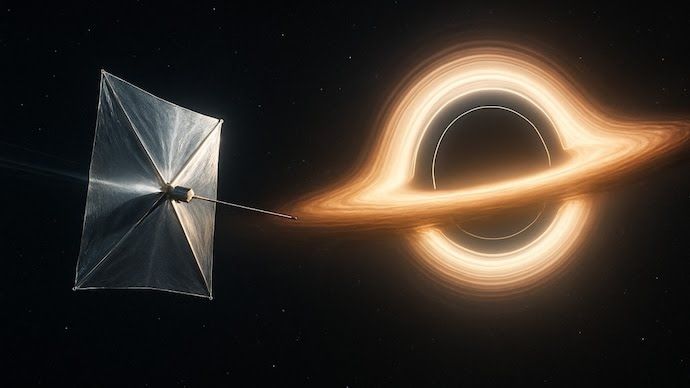
Astrophysicist Cosimo Bambi has unveiled an ambitious proposal to explore the mysteries of black holes using a spacecraft no heavier than a paperclip. His concept, published in the journal iScience, outlines a plan to send a nanocraft powered by Earth-based lasers, capable of traveling at nearly one-third the speed of light.
The tiny probe, just a few grams in weight, would consist of a microchip attached to a light sail, propelled forward by intense photon beams. This innovative propulsion system could allow it to traverse the 20–25 light-year distance to a nearby black hole in roughly a century, a feat impossible with conventional chemical rockets.
Bambi believes the mission could become feasible within the next 20–30 years as laser propulsion technology advances and costs decline. A key challenge, however, lies in identifying a target. Black holes emit no light and cannot be directly observed. However, astronomers can detect them by studying the gravitational influence they exert on nearby stars or the way they bend light.
With improving detection methods, scientists are optimistic about locating a black hole within 25 light-years of Earth in the coming decade, opening a realistic launch window for such a groundbreaking mission.
Once in proximity to the black hole, the nanocraft could conduct unprecedented experiments, potentially confirming whether event horizons truly exist and testing Einstein’s general relativity under extreme gravitational conditions. If successful, the mission could transform our understanding of the cosmos and the fundamental laws of physics.
